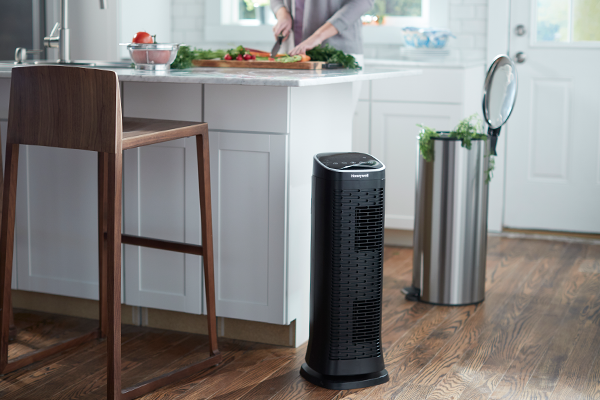Indoor Air Exposed.
Take some simple steps to decrease VOCs in your home.
Download our infographic on indoor air
Volatile organic compounds (VOCs) are chemicals emitted as gases from certain solids or liquids.
VOCs in the home
Concentrations of many VOCs are consistently higher indoors (up to ten times higher) than outdoors as they are released by a wide array of sources within the home and can also migrate indoors from outdoor sources. Exposure to VOCs in the home can potentially impact health, especially in young children.
To decrease the amount of VOCs in your home, there are a number of simple steps that can be taken, from choosing products that release fewer VOCs to helping to capture VOCs by using air purification, as well as increasing ventilation in the home when products are being used.
The most common indoor VOC emission sources include consumer products, building materials, combustion processes, personal care products, attached garages, dry-cleaned clothing, and municipal tap water. Products can release VOCs while they are being used, and, to some degree, when they are stored.
Airborne Chemicals Exposed: A look inside the typical home.
Get a checklist of potential sources of indoor air pollutants
Terpenes
Like a-pinene and limonene. Typically found in consumer products with fragrance such as, laundy detergents, and soaps.
Ethanol
Solvent in household cleaning agents such as glass cleaners, dishwashing and laundry detergent.
Butanal
Emitted from tobacco smoking and other indoor combustion sources such as cooking stoves, candle burning and barbeques.
Acetone.
Released from nail polish remover, furniture polish and wallpaper.
Tolunene
Found in paints or gasoline solvents.
Benzene
Associated with gasoline combustion and some paints.
Xylene
Released by vehicles, either traffic emissions of vehicles idling.
Carbon Disulfide
Emitted from chlorinated tap water.
Formaldehyde
Released by particleboard, floor lacquers and certain moulded plastics.
Dichlorobenzene
Emitted from deodourizers, and mothballs.
Follow these simple steps to help reduce VOCs in the home.
Remove
Remove as many sources of VOCs as possible. Try using less cleaning products or storing them in a location outside the home (eg., garage). Running an air purifier with carbon filtration can also help trap and remove VOCs from inside your home.
Replace
Replace typical consumer products and building materials with certified “green” products that generate lower VOCs or no VOCs (e.g., low VOC paint).
Relocate
Relocate products that release VOCs to areas that are not inhabited like detached garages and sheds. Also, relocate the use of these products to outdoors, for example, painting furniture outside or in the garage.
Find the right air purifier for you










